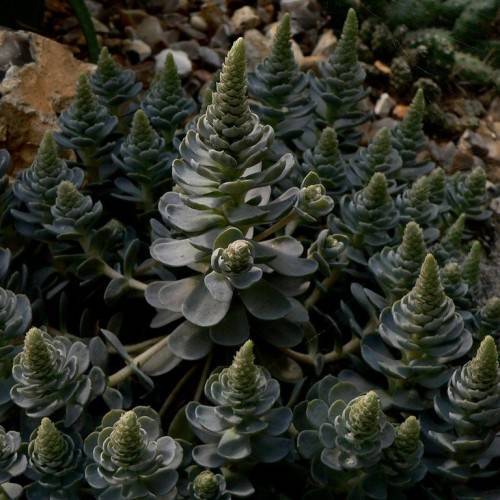
Chinese dunce cap
Orostachys iwarenge
Cycle:
Herbaceous Perennial
Watering:
Frequent
Hardiness Zone:
5
Flowers:
Flowers In Summer
Sun:
Full sun, Part sun/part shade
Soil:
Well-drained
Fruits:
Fruits Ready In Summer
Leaf:
Yes
Growth Rate:
High
Maintenance:
Low
Drought Tolerant:
Yes
Salt Tolerant:
Yes
Care Level:
Medium
watering
Hop-like oregano plants need a moderate amount of watering, about twice or 3 times per week. Water the plant deeply so that the soil is thoroughly moist. Soak the potting soil to a depth of at least 6-8 inches. Allow the top inch or 2 of soil to dry out in between waterings. Do not allow the soil to become dry for extended periods of time, as this can cause the plant to become stressed and reduce its growth. Stop watering for a while when new growth resumes in the spring. Water a bit less during the winter months when the growth has slowed.
sunlight
Hop-like oregano (Origanum rotundifolium (incl. hybrids)) is a plant species that prefers full sun in order to thrive. It needs 6-8 hours of direct sunlight a day in order to reach its full potential, this can be in the form of both morning and afternoon sun. Any shade during the middle hours of the day is acceptable, as long as it still receives a total of 6-8 hours of direct sun. It should receive morning sun in order for the foliage to remain compact and avoid stretching.
pruning
Pruning hop-like oregano is essential to encourage new growth and improved vigor. It’s best to prune this plant species in the late winter before the new spring growth appears. Start by cutting away any dead, discolored, and diseased stems. Then, selectively prune a few of the longest stems back to within a few inches of the ground. You can also pinch off any flowers that have already bloomed. Doing this will ensure that your oregano plants will stay nice and bushy. After pinching off the spent flowers, the remaining buds will sprout and continue to bloom throughout the summer.
